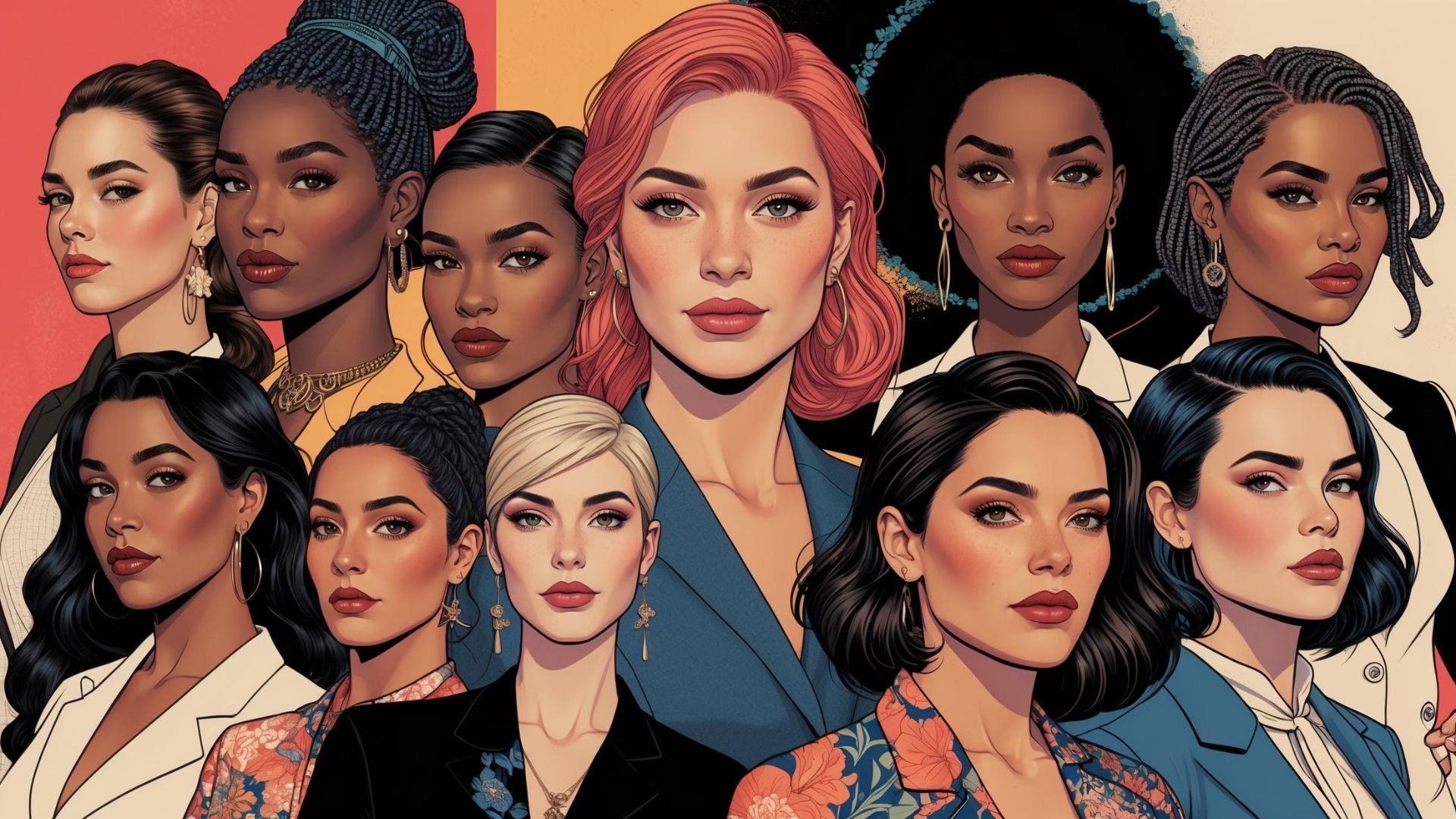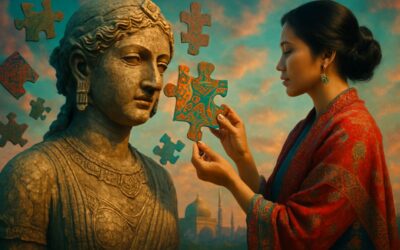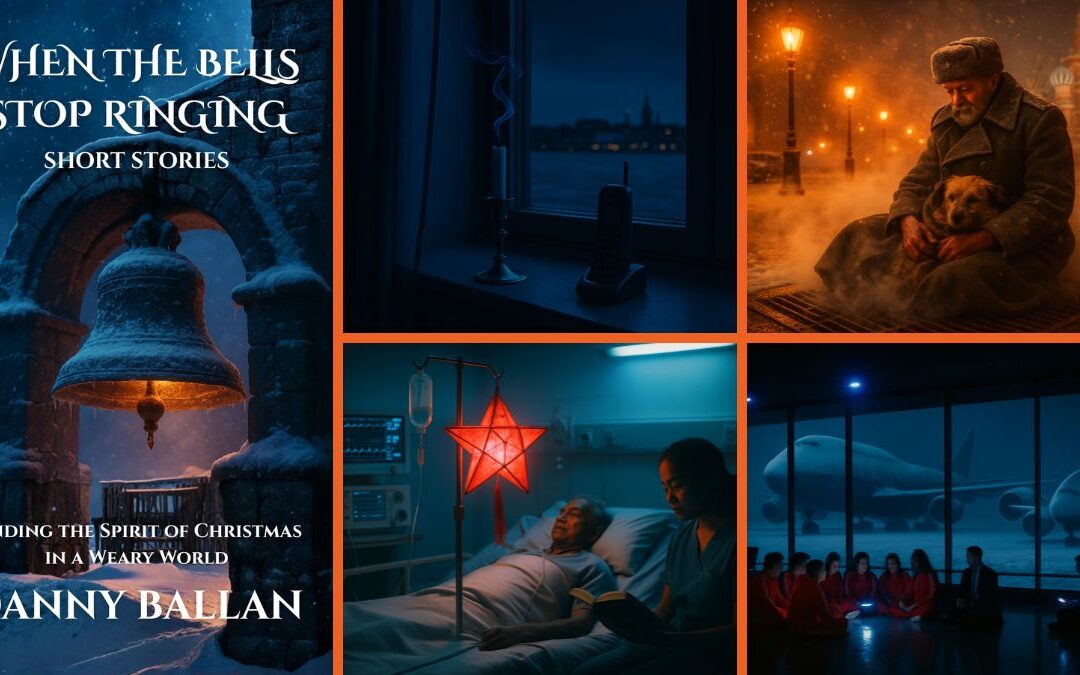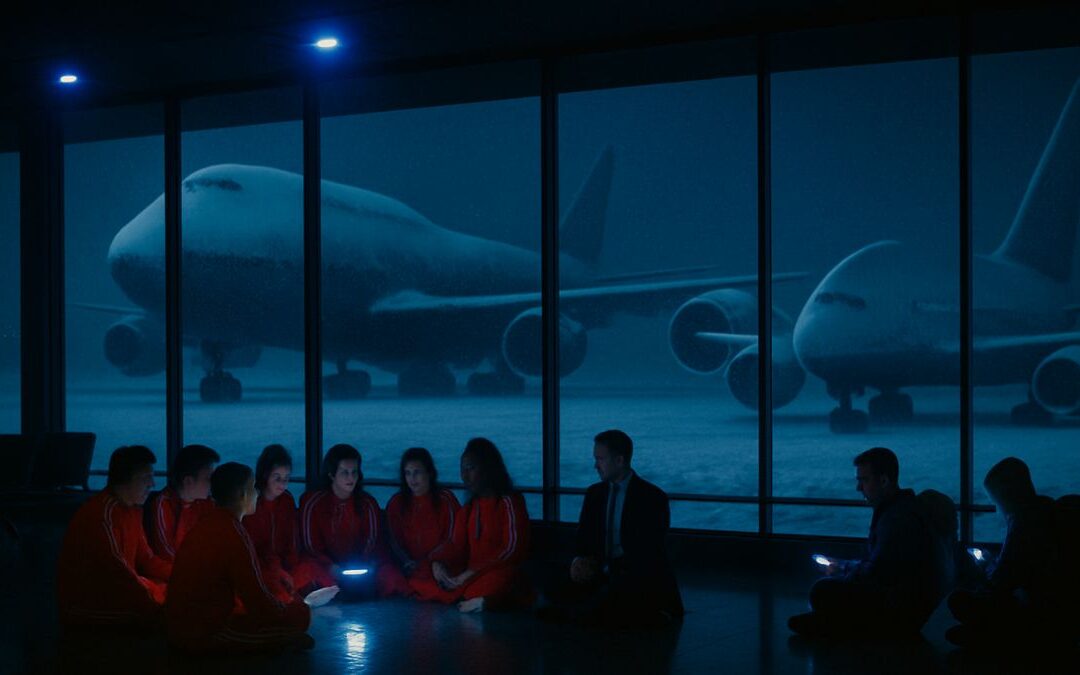- The Ubiquitous Lens: Media’s Pervasive Influence on Perception
- The Long Shadow of Stereotypes: From Damsels to Devices
- The Problem of the “Male Gaze”
- Breaking the Mold, One Frame at a Time: Shifting Paradigms
- The Power of Authenticity and Diversity
- The Subtle Art of Subversion: Microaggressions and Unconscious Biases
- The Digital Frontier: Social Media and the Double-Edged Sword
- Beyond the Screen: The Real-World Ramifications
- The Path Forward: Cultivating Conscious Consumption and Creation
- Let’s Learn Vocabulary in Context
- Let’s Discuss:
- Learn with AI
- Frequently Asked Questions
- How has the historical portrayal of women in media often been characterized?
- What is the concept of the “male gaze” and how does it relate to media representation of women?
- How has the representation of women in media begun to shift in recent decades?
- Why is authenticity and diversity crucial in portraying women in media?
- What are subtle biases and microaggressions, and how do they impact the portrayal of women in media?
- How has social media impacted the representation of women?
- What are the real-world consequences of how women are depicted in media?
- What steps are needed to move towards more equitable and authentic representation of women in media?
- Let’s Play & Learn
The Ubiquitous Lens: Media’s Pervasive Influence on Perception
In the theatre of our contemporary existence, media acts as an omnipresent and profoundly influential playwright, scripting narratives that shape our perceptions, reinforce societal norms, and, in many instances, dictate what is considered “normal.” From the flickering glow of a television screen to the curated feeds of social media, from the glossy pages of magazines to the booming soundscapes of podcasts, media surrounds us, permeating the very fabric of our daily lives. It is more than mere entertainment or information dissemination; it is a powerful cultural force, wielding the capacity to construct, reflect, and even distort reality. Within this vast and intricate web, the representation of women stands as a particularly salient and often contentious issue. For decades, feminists, sociologists, and media scholars have meticulously dissected and critiqued how women are presented across various platforms, uncovering patterns that range from subtle biases to overt stereotypes. The stakes are undeniably high: these portrayals do not exist in a vacuum. They significantly impact how women view themselves, how society views women, and ultimately, the opportunities and challenges they encounter in the real world.
The Long Shadow of Stereotypes: From Damsels to Devices
Historically, the portrayal of women in media has been, to put it mildly, less than nuanced. For a considerable portion of the 20th century, and arguably extending into the present day, female characters were often relegated to a handful of archetypal roles that served to reinforce traditional gender norms. The damsel in distress, perpetually awaiting rescue by a heroic male figure, was a pervasive trope, particularly in early cinema and literature. Her primary function was to be beautiful, vulnerable, and ultimately, an object to be saved, rather than an agent of her own destiny. Then there was the femme fatale, a seductive and dangerous woman who used her wiles to ensnare and often destroy men. While seemingly powerful, this archetype often served to demonize female agency, portraying women who stepped outside conventional roles as manipulative and untrustworthy.
Beyond these more dramatic figures, the media frequently presented women primarily in relation to men: the dutiful wife, the nurturing mother, the supportive girlfriend, or the glamorous accessory. Their narratives rarely revolved around their own ambitions, intellectual pursuits, or professional achievements. Instead, their identities were largely defined by their relationships to male characters, their domestic roles, or their physical attractiveness. This limited scope not only stifled creative storytelling but also sent a powerful, albeit often unspoken, message about women’s place in society: their value was often intrinsically linked to their beauty, their ability to care for others, or their appeal to men. The consequence? A pervasive lack of diverse female role models that could inspire and empower future generations to aspire beyond traditional boundaries.
The Problem of the “Male Gaze”
A critical lens through which to analyze this historical portrayal is the concept of the “male gaze.” Coined by film theorist Laura Mulvey, this term describes the way in which women in visual media are often depicted from a masculine, heterosexual perspective, serving as objects of male pleasure. This manifests in various ways: camera angles that linger on female bodies, narratives that prioritize male desire, and a general emphasis on a woman’s appearance over her interiority or capabilities. The male gaze reduces women to their physical form, stripping them of their agency and complexity. This perspective isn’t just about how women are shown, but how they are seen – as existing primarily for the viewing pleasure and affirmation of men.
Breaking the Mold, One Frame at a Time: Shifting Paradigms
Fortunately, the media landscape is not static, and over recent decades, there has been a discernible, albeit often gradual, shift in the representation of women. The relentless advocacy of feminist movements, coupled with a growing societal awareness of gender inequality, has compelled content creators to re-evaluate their approaches. We are witnessing an increasing number of complex, multifaceted female characters gracing our screens and pages. These women are scientists, leaders, athletes, innovators, and flawed, relatable human beings. They have their own aspirations, face their own challenges, and drive their own narratives, often independent of male counterparts.
The rise of strong female protagonists in television shows and films, the increasing visibility of women in leadership roles in news media, and the burgeoning presence of female voices in podcasting and online platforms are all indicators of this positive evolution. This isn’t just about tokenism; it’s about a genuine effort to portray women as active agents in their own stories and in the world at large. The success of movies and TV shows centered around female ensembles, or featuring women in traditionally male-dominated professions, demonstrates a burgeoning audience appetite for more authentic and empowering representations.
The Power of Authenticity and Diversity
The move towards more authentic and diverse representation extends beyond simply creating “strong” female characters. It also encompasses portraying women from various ethnic backgrounds, socio-economic strata, sexual orientations, and body types. This intersectionality is crucial, as it acknowledges that women’s experiences are not monolithic and are shaped by a confluence of identities. When media reflects this rich tapestry of human experience, it becomes more relatable and resonant for a wider audience, simultaneously challenging narrow beauty standards and fostering a more inclusive societal dialogue.
The Subtle Art of Subversion: Microaggressions and Unconscious Biases
While overt stereotypes may be diminishing, the battle for equitable representation is far from over. A more insidious challenge lies in the realm of subtle biases and microaggressions—small, often unconscious, verbal or behavioral indignities that communicate hostile, derogatory, or negative messages based on one’s group affiliation. In media, this can manifest in numerous ways: female characters being consistently interrupted, their opinions being dismissed, or their achievements being attributed to luck rather than skill. It might be the perpetuation of the “cool girl” trope, where a woman gains acceptance by disavowing typical feminine interests, or the tendency to “mansplain” concepts to female characters who are clearly already knowledgeable.
These seemingly minor instances, when accumulated, create a cumulative effect that subtly undermines female authority and competence. They contribute to an environment where women are implicitly (and sometimes explicitly) told they are less capable, less intelligent, or less deserving of respect than their male counterparts. Recognizing and dismantling these subtle biases requires a heightened level of media literacy and a commitment from content creators to scrutinize their own ingrained assumptions.
The Digital Frontier: Social Media and the Double-Edged Sword
The advent of social media has introduced a fascinating, and often contradictory, dimension to the representation of women. On one hand, platforms like Instagram, TikTok, and YouTube have empowered countless women to create their own narratives, bypass traditional media gatekeepers, and build communities around authentic self-expression. Influencers, content creators, and activists are using these platforms to challenge beauty standards, advocate for social justice, and share diverse life experiences, offering a powerful counter-narrative to mainstream portrayals. This democratization of content creation has provided a vital space for voices that were historically marginalized.
However, social media also presents a significant challenge. The relentless pursuit of algorithmic engagement often fuels a culture of performativity and hyper-sexualization, where women feel pressure to conform to unrealistic beauty ideals or present a carefully curated, often inauthentic, version of themselves. The prevalence of filters, photo editing, and the relentless comparison to others can take a heavy toll on self-esteem and mental health. Furthermore, online spaces are frequently breeding grounds for harassment, cyberbullying, and misogynistic attacks, particularly against women who dare to challenge the status quo or express dissenting opinions. This makes the digital frontier a double-edged sword: a powerful tool for empowerment, but also a fertile ground for new forms of scrutiny and control.
Beyond the Screen: The Real-World Ramifications
The way women are depicted in media is not merely an academic exercise; it has tangible, real-world consequences. When young girls consistently see women portrayed as passive, dependent, or solely valued for their appearance, it can significantly limit their aspirations and self-belief. Conversely, seeing diverse, capable female role models can inspire them to pursue ambitious careers, challenge gender norms, and assert their voices.
Moreover, media portrayals influence societal attitudes. If women are consistently shown as emotional, irrational, or less competent in professional settings, these biases can seep into hiring practices, promotion opportunities, and even the way women are treated in everyday interactions. The normalization of harmful stereotypes can contribute to gender-based violence, body shaming, and the perpetuation of the wage gap. Conversely, positive and authentic representations can foster empathy, dismantle prejudice, and accelerate progress towards gender equality. The media, in essence, helps construct the very reality in which we live.
The Path Forward: Cultivating Conscious Consumption and Creation
Moving towards a more equitable and authentic representation of women in media requires a multi-pronged approach. Firstly, it necessitates a conscious effort from content creators – writers, directors, producers, journalists, advertisers – to critically examine their own biases, challenge traditional tropes, and actively seek out diverse voices and narratives. This means not just adding a token female character, but genuinely integrating women into stories as complex, fully realized individuals.
Secondly, it calls for greater media literacy among consumers. By becoming more discerning viewers, listeners, and readers, we can learn to identify stereotypes, question problematic portrayals, and demand better. Supporting media that offers progressive and nuanced representations sends a clear message to the industry about what audiences truly want. Engaging in critical discussions, sharing diverse content, and challenging problematic narratives in our own circles can contribute to a more informed and empowered public.
Finally, fostering female talent behind the scenes is paramount. Increasing the number of women in leadership positions in media companies – as executives, directors, writers, and editors – directly impacts the stories that are told and how they are told. When women are in positions of power, they are better equipped to champion authentic portrayals, challenge ingrained biases, and pave the way for a more inclusive media landscape. The journey towards equitable representation is ongoing, but by embracing both conscious consumption and thoughtful creation, we can collectively strive towards a media that truly reflects the richness, complexity, and undeniable power of women in all their myriad forms.
Let’s Learn Vocabulary in Context
Let’s dive into some of the words and phrases that really helped us talk about women’s representation in the media. These aren’t just fancy academic terms; they’re incredibly useful for discussing everything from social trends to personal experiences.
First up, we had omnipresent. We described media as an “omnipresent” playwright. If something is “omnipresent,” it means it’s present everywhere at the same time, or at least appears to be. Think about how smartphones seem to be everywhere now – on the bus, in restaurants, even in conversations. You could say, “The brand’s logo is omnipresent in sports stadiums,” or “The feeling of anxiety can be omnipresent in stressful situations.” It’s a great word to use when you want to emphasize how pervasive something is, how it’s virtually impossible to escape its presence. It suggests a constant, encompassing presence, like the air we breathe.
Then we encountered nuanced. We said the historical portrayal of women was “less than nuanced.” When something is “nuanced,” it means it has subtle differences in meaning, expression, or tone. It’s about avoiding black-and-white thinking and appreciating the subtle shades. If you describe an argument as “nuanced,” it means it takes into account many different perspectives and complexities, rather than being simplistic. You might say, “Her understanding of the political situation is very nuanced,” or “The director gave a nuanced performance, capturing the character’s conflicting emotions.” It’s about precision and depth, avoiding broad generalizations.
We also discussed the damsel in distress and the femme fatale. These are not single words but well-known phrases, almost like literary shorthand, representing specific character types. A damsel in distress is a beautiful young woman, typically in a narrative, who is in peril and needs a hero to rescue her. It’s an old trope, often seen in fairy tales and early adventure stories. You could jokingly say, “Don’t be a damsel in distress; you can solve this problem yourself!” A femme fatale is an attractive and seductive woman who ultimately brings disaster to a man who becomes involved with her. She’s often portrayed as mysterious and dangerous. You might use it to describe a character in a spy movie, saying, “She played the classic femme fatale, luring him into a trap.” These phrases are useful for quickly identifying specific, often stereotypical, roles.
Next, we explored the male gaze. This is a more academic term, but it’s becoming increasingly common in everyday discussion about media. The male gaze describes the way in which women and the world are often depicted in visual arts and literature from a masculine, heterosexual perspective, typically presenting women as objects of male pleasure. It’s about whose perspective is dominant and how that perspective shapes what we see. You might hear someone say, “That advertisement is clearly designed with the male gaze in mind,” or “The movie challenged the traditional male gaze by focusing on female agency.” It’s a critical tool for analyzing how power dynamics are reflected in visual media.
We also talked about intersectionality. This is a crucial concept, especially in modern discussions about identity and social justice. Intersectionality is the interconnected nature of social categorizations such as race, class, gender, and sexual orientation, regarded as creating overlapping and interdependent systems of discrimination or disadvantage. Essentially, it means that someone’s experiences are shaped by multiple aspects of their identity simultaneously. For example, a Black woman might experience sexism differently from a white woman due to the added layer of racism. You could say, “The discussion on poverty needs to consider intersectionality, as different groups are affected in unique ways,” or “Her research explores the intersectionality of gender and disability.” It encourages a more complex and inclusive understanding of social issues.
Then we had subtle biases. These are biases that are not immediately obvious or explicit, but rather operate in a quiet, indirect, or understated way. They are often unconscious and can be harder to detect than overt discrimination. We might not even realize we have them. You could say, “The company needs to address the subtle biases in its hiring process,” or “Her article highlighted the subtle biases often present in news reporting.” It emphasizes that prejudice isn’t always loud; sometimes it’s barely perceptible but still impactful.
Related to subtle biases are microaggressions. This term is very useful in everyday conversations about social interactions. Microaggressions are brief, everyday exchanges that send denigrating messages to certain individuals because of their group membership. They are often unintentional but can be very hurtful. Imagine someone complimenting a person of color on their “articulate” English – it might seem like a compliment, but it subtly implies surprise that they speak well, a microaggression. You might hear someone say, “She felt a constant stream of microaggressions at her new workplace,” or “We need to educate people about what microaggressions are and why they’re harmful.” It’s about recognizing the cumulative effect of small, often overlooked, indignities.
Finally, we used the term double-edged sword. This is a fantastic idiom. A double-edged sword is something that has both favorable and unfavorable consequences. It can be beneficial in one respect but detrimental in another. We used it to describe social media: great for empowerment, but also a breeding ground for problems. You could say, “The internet is a double-edged sword; it provides information but also spreads misinformation,” or “His brilliant creativity was a double-edged sword; it led to breakthroughs but also immense pressure.” It’s a vivid way to describe a situation or tool with both positive and negative aspects.
So, as you can see, these words and phrases are not just for academic papers. They provide a rich vocabulary for understanding and discussing the complexities of our media-saturated world and the important social issues within it.
Vocabulary Quiz
Let’s Discuss:
- The Evolution of Archetypes: We discussed the “damsel in distress” and “femme fatale.” Can you identify other common archetypes for women in media, past or present? How have these evolved, and what new archetypes are emerging?
- Consider discussing the “strong female protagonist,” the “manic pixie dream girl,” or the “cool girl.” Think about how these archetypes both empower and potentially limit female characters. Are there cultural differences in how these archetypes are perceived or portrayed? How do these archetypes reflect or challenge societal expectations of women?
- The Power of the Gaze: The “male gaze” was explored as a significant concept. How do you observe the male gaze manifesting in current media (films, TV, advertising, social media)? Can you identify instances where it is actively subverted or challenged, and how does that make you feel as a viewer?
- Discuss specific examples. Consider the impact of different camera angles, narrative perspectives, and the emphasis on appearance versus agency. How do female directors or creators potentially shift the gaze? What role does body image play in this discussion?
- Beyond Representation: While seeing women in diverse roles is crucial, what other factors contribute to truly authentic and empowering representation in media? What does “authentic” representation mean to you?
- Think about narrative depth, character development, agency, and the avoidance of tokenism. Does it mean showing vulnerability, or just strength? How important is it for characters to be relatable, or can they be aspirational? Consider the difference between simply having a woman in a role and genuinely exploring her inner world and motivations.
- The Social Media Paradox: We touched on social media as a “double-edged sword.” In your experience, how has social media both empowered and disempowered women in terms of self-representation and public perception?
- Discuss the positive aspects like community building, self-expression, and activism. On the flip side, consider the pressures of performativity, unrealistic beauty standards, cyberbullying, and the impact on mental health. How can individuals navigate these platforms more consciously?
- The Road Ahead: Looking to the future, what specific changes or trends would you like to see in the representation of women in media? What responsibilities do media creators, consumers, and society as a whole have in driving these changes?
- Brainstorm concrete examples: more women directors, diverse writing rooms, challenging ageism, better representation of women with disabilities, or more nuanced portrayals of motherhood. Discuss the role of media literacy campaigns and advocating for change. What kind of media world do we want to build for future generations?
Learn with AI
Disclaimer:
Because we believe in the importance of using AI and all other technological advances in our learning journey, we have decided to add a section called Learn with AI to add yet another perspective to our learning and see if we can learn a thing or two from AI. We mainly use Open AI, but sometimes we try other models as well. We asked AI to read what we said so far about this topic and tell us, as an expert, about other things or perspectives we might have missed and this is what we got in response.
Alright, let’s put on our expert hats and delve a bit deeper into the fascinating and ever-evolving landscape of women’s representation in media. While our main article covered a lot of ground, there are a few subtle but significant points that often get missed or deserve a little extra spotlight.
One critical area often underexamined is the concept of “tokenism” versus genuine representation. We’ve certainly seen an increase in the number of female characters, which is a step forward. However, sometimes a single female character is added to a predominantly male cast, and her purpose largely becomes to represent “all women” or to tick a diversity box. This token female character often lacks depth, is rarely the driver of the plot, and her presence can sometimes even subtly reinforce the idea that male characters are the default or norm. True representation isn’t just about counting numbers; it’s about the quality and complexity of the roles offered, ensuring that female characters have their own arcs, flaws, and agency, rather than merely existing to support male narratives. We need to ask: Is this character fully realized, or just a placeholder?
Another nuanced point is the generational shift in media consumption and creation. While traditional media still holds sway, the rise of user-generated content, especially among younger demographics, is fundamentally altering the landscape. Young women are increasingly becoming their own media producers, directors, and stars through platforms like TikTok, YouTube, and independent filmmaking. This isn’t just about passive consumption anymore; it’s about active creation and shaping one’s own narrative. This shift has the potential to bypass traditional gatekeepers and challenge long-held industry norms, creating content that is inherently more diverse and authentic because it’s coming directly from diverse lived experiences. However, as we discussed, this also comes with its own set of pressures and challenges, like the constant demand for performativity and the harsh reality of online harassment.
Finally, let’s consider the economic imperative behind better representation. While ethical and social justice arguments are paramount, there’s also a powerful business case for authentic and diverse portrayals. Studies consistently show that films and TV shows with diverse casts and inclusive narratives perform better at the box office and attract larger audiences. Audiences, especially younger ones, are increasingly savvy and crave content that reflects the complexity of their own lives and the diverse world around them. Media companies that fail to adapt risk becoming irrelevant. So, while progress might seem slow, the combined pressure of social advocacy and undeniable market demand is creating a powerful impetus for change, pushing the industry to move beyond tokenism and embrace truly equitable representation. It’s a fascinating intersection of culture, ethics, and commerce, and it’s driving real change.
Frequently Asked Questions
How has the historical portrayal of women in media often been characterized?
Historically, the portrayal of women in media was largely limited and often reinforced traditional gender norms. Common archetypes included the “damsel in distress,” the “femme fatale,” or women defined primarily by their relationships to men (wife, mother, girlfriend). These representations often depicted women as passive, dependent, or solely valued for their appearance, rather than as complex individuals with their own ambitions or intellectual pursuits. This created a lack of diverse and empowering female role models.
What is the concept of the “male gaze” and how does it relate to media representation of women?
The “male gaze,” a term coined by film theorist Laura Mulvey, describes how women in visual media are often depicted from a masculine, heterosexual perspective, serving as objects of male pleasure. This manifests through camera angles focusing on female bodies, narratives centered around male desire, and an emphasis on a woman’s physical appearance over her internal life or abilities. The male gaze reduces women to their physical form, diminishing their complexity and agency, and frames them as existing primarily for the viewing pleasure of men.
How has the representation of women in media begun to shift in recent decades?
Over recent decades, there has been a positive shift in the representation of women in media. Driven by feminist advocacy and increased societal awareness, content creators are portraying more complex, multifaceted female characters. These characters are depicted as scientists, leaders, athletes, and innovators, driving their own narratives and pursuing their own aspirations, often independent of male counterparts. The rise of strong female protagonists and the increased visibility of women in leadership roles in media indicate a move towards more authentic and empowering portrayals.
Why is authenticity and diversity crucial in portraying women in media?
Authenticity and diversity in portraying women are crucial because women’s experiences are not uniform. Representation needs to encompass women from various ethnic backgrounds, socio-economic strata, sexual orientations, and body types. This intersectionality acknowledges the confluence of identities that shape a woman’s life. Diverse representation makes media more relatable to a wider audience, challenges narrow beauty standards, and fosters a more inclusive societal dialogue, moving beyond simply creating “strong” but potentially homogenous female characters.
What are subtle biases and microaggressions, and how do they impact the portrayal of women in media?
While overt stereotypes are diminishing, subtle biases and microaggressions remain a challenge. These are small, often unconscious, indignities that communicate negative messages based on group affiliation. In media, this can involve female characters being interrupted, their opinions dismissed, or their achievements attributed to luck. These seemingly minor instances, like the “cool girl” trope or “mansplaining,” subtly undermine female authority and competence, creating a cumulative effect that suggests women are less capable or deserving of respect.
How has social media impacted the representation of women?
Social media presents a complex picture. On one hand, platforms like Instagram and TikTok empower women to create their own narratives, bypass traditional media, and build communities, offering counter-narratives to mainstream portrayals and challenging norms. On the other hand, social media can fuel pressure to conform to unrealistic beauty ideals through curated content and filters. It can also be a breeding ground for harassment, cyberbullying, and misogynistic attacks, particularly against women who express dissenting opinions, making it a double-edged sword for representation.
What are the real-world consequences of how women are depicted in media?
The way women are depicted in media has significant real-world consequences. Limited and stereotypical portrayals can restrict young girls’ aspirations and self-belief. Conversely, diverse and capable female role models can inspire them to pursue ambitious goals. Media portrayals also influence societal attitudes, potentially contributing to biases in hiring, promotion, and daily interactions, and even normalizing harmful stereotypes that can contribute to gender-based violence and the wage gap. Positive representation can foster empathy and accelerate progress towards gender equality.
What steps are needed to move towards more equitable and authentic representation of women in media?
Achieving more equitable representation requires a multi-pronged approach. Content creators must critically examine their biases, challenge traditional tropes, and actively seek diverse narratives. Media consumers need to develop media literacy to identify stereotypes and demand better representation. Supporting progressive media sends a clear message to the industry. Finally, increasing the number of women in leadership positions within media companies (executives, directors, writers) is paramount, as women in power are better positioned to champion authentic portrayals and challenge ingrained biases.










0 Comments